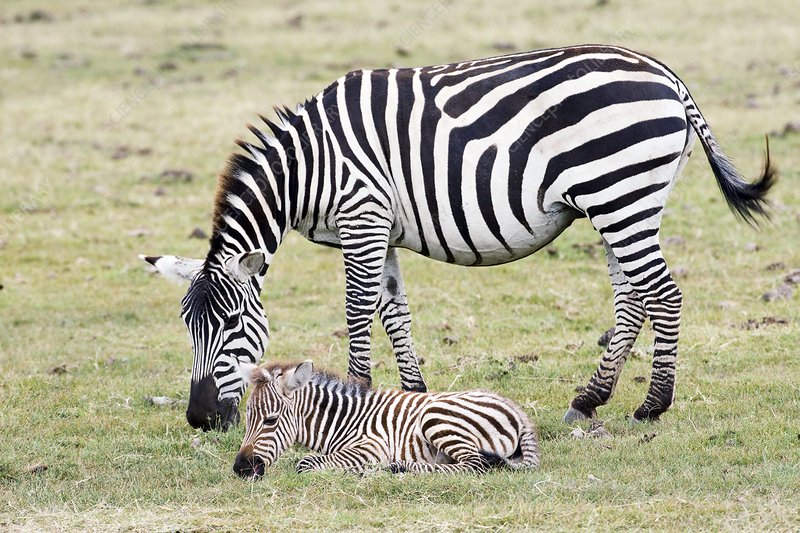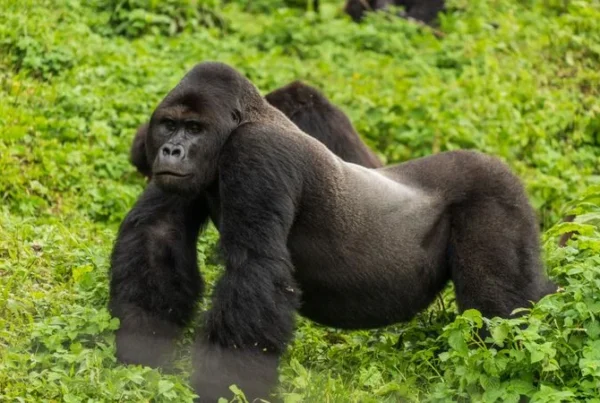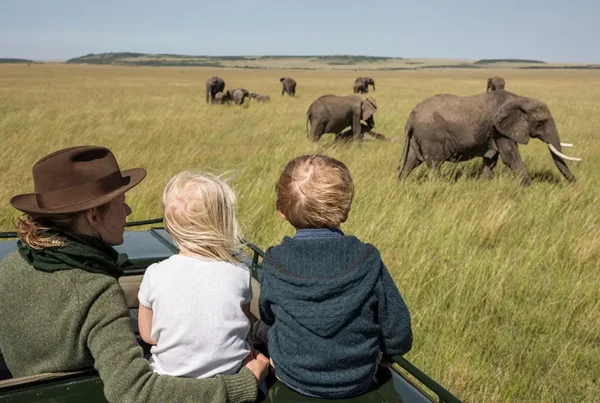5 Fascinating Facts About Plains Zebra
Facts About Plains Zebra
Stripes in Motion: Nature’s Optical Wonder
Few animals command attention quite like the Plains Zebra (Equus quagga), with its distinctive black-and-white stripes gliding effortlessly across the African savannah. This iconic creature has long captured human fascination, not just for its mesmerizing appearance but also for its highly social behavior, remarkable adaptations, and vital ecological role. As the most common and widespread of the zebra species, the Plains Zebra stands as a symbol of Africa’s wild heart, moving in vast herds and interacting in complex ways that showcase the richness of nature’s design.
What appears at first to be a simple coat of contrasting colors is, in fact, a product of millennia of evolution, crafted to meet the demands of survival in a dynamic environment. Every stripe, muscle, and movement of the Plains Zebra tells a deeper story. Beneath its beauty lies a set of fascinating biological, behavioral, and ecological truths that underscore its status as a marvel of the natural world. In this exploration, we delve into five compelling facts that uncover the full splendor of the Plains Zebra.
The Purpose of the Stripes: More Than Just Aesthetics
Perhaps the most enduring mystery surrounding the Plains Zebra is the purpose behind its striking stripes. Numerous scientific theories have sought to explain this unique characteristic, and while the debate continues, several prominent ideas have emerged. One of the most widely supported explanations is that the stripes serve as a deterrent to biting insects, particularly tsetse flies and horseflies. Research suggests that the contrasting black-and-white patterns confuse these pests, reducing their ability to land effectively on the zebra’s skin and decreasing the chances of disease transmission.
Beyond deterring insects, stripes may also serve a thermoregulatory function. The black stripes absorb more heat than the white ones, creating tiny air currents along the body that help with cooling. In the hot savannah environment, this natural air conditioning system is not just clever—it’s essential.
Another compelling theory suggests that stripes function as a tool for social cohesion and individual recognition. In large herds, where visual confusion is easy, the unique stripe pattern of each zebra may help individuals identify one another. This is particularly important for mother-foal bonding and maintaining social bonds. The motion of stripes when zebras run also creates a dazzling optical illusion, potentially confusing predators and making it difficult to single out an individual.
Complex Social Structures and Communication
The social life of the Plains Zebra is a marvel of organization and intelligence. These animals live in small family groups called harems, consisting of one dominant male, several females, and their offspring. These harems are stable and tightly knit, with strong bonds between members. Within each harem, communication is constant and multifaceted. Zebras use vocalizations, ear positioning, facial expressions, and even tail movements to convey information about emotions, danger, or intent.
In addition to harems, Plains Zebras frequently congregate in larger temporary herds, especially during migrations or in areas with plentiful grazing. These gatherings offer safety in numbers and the opportunity to interact with other social units. Despite the apparent simplicity of a zebra’s life, the layers of social complexity rival that of many primates. Hierarchies, alliances, and conflict resolution are all part of their social repertoire, indicating a high level of cognitive sophistication.
Zebras are also incredibly attentive parents. Foals are able to stand and walk within an hour of birth, a necessary adaptation in predator-rich habitats. Mothers isolate themselves briefly after giving birth to ensure their newborn imprints on them visually and through scent. This early bonding period is critical for the foal’s survival and integration into the harem.
Adapted for Endurance and Migration (Facts About Plains Zebra)
The Plains Zebra is not only visually striking but also physically formidable. These animals are built for endurance, capable of traveling long distances in search of food and water. Their powerful legs, sturdy bodies, and efficient digestive systems enable them to thrive in a wide range of environments, from open grasslands to woodland savannahs.
Perhaps the most awe-inspiring display of their stamina comes during the Great Migration, where thousands of zebras join wildebeests and other herbivores in a massive journey across East Africa. This seasonal migration is driven by rainfall patterns and the availability of fresh grazing. The trek is perilous, fraught with river crossings, predator ambushes, and challenging terrain. Yet the Plains Zebra is undeterred, displaying a tenacity that speaks to its evolutionary success.
Their digestive system is another point of advantage. Unlike ruminants such as antelope, zebras are hindgut fermenters, which allows them to extract nutrients from low-quality forage. This enables them to graze on coarse grasses that other animals may avoid, giving them a competitive edge in mixed-species herds.
An Essential Player in the Ecosystem
Beyond their social and physical prowess, Plains Zebras play a crucial ecological role. As primary grazers, they are often the first to move into new grasslands. Their feeding habits help trim tall grasses, making the area more accessible to other herbivores. By consuming coarse vegetation, zebras create a mosaic of plant heights and species that support a wider variety of life forms.
Moreover, their manure enriches the soil, aiding plant growth and contributing to the health of the ecosystem. Predators, too, rely on zebras as a major food source. Lions, hyenas, leopards, and crocodiles all depend on zebra populations to sustain themselves. In this way, the Plains Zebra forms a vital link in the food web, supporting both plant and animal life.
Conservationists often view zebras as indicator species—animals whose health reflects the broader status of the ecosystem. Protecting zebra populations means safeguarding vast expanses of habitat that benefit many other species. Unfortunately, threats such as habitat fragmentation, human-wildlife conflict, and poaching continue to put pressure on these beautiful creatures.
Cultural Significance and Conservation Challenges
The Plains Zebra has captured the human imagination for centuries, symbolizing freedom, wildness, and natural beauty. Its image graces everything from tribal art to corporate logos, embodying a sense of untamed elegance. Yet this cultural admiration has not always translated into effective protection.
Although the Plains Zebra is currently classified as Near Threatened rather than endangered, its numbers are declining in some areas. Agricultural expansion, fencing, and competition with livestock limit their access to traditional migration routes and grazing grounds. Poaching, while less severe than for other African wildlife, still occurs, particularly in regions where their skins are prized or where local communities hunt them for meat.
Conservation strategies must address both ecological and social dimensions. Community-based programs that offer incentives for coexistence, education initiatives that raise awareness about zebra behavior and importance, and cross-border conservation efforts for migratory corridors are all essential. The survival of the Plains Zebra depends not only on biological resilience but also on human commitment to living in harmony with the wild.
Witness the Majestic Plains Zebra with WildHorn Africa
For those who yearn to witness the beauty, behavior, and brilliance of the Plains Zebra firsthand, nothing compares to a guided safari across the African wilderness. Standing amidst a herd, hearing the calls and seeing the stripes ripple through the golden grass, is an experience that stirs the soul and deepens our connection to the natural world.
WildHorn Africa offers curated safari adventures that bring you closer to this magnificent species and many others. Whether you’re exploring the Serengeti, the Okavango Delta, or the Maasai Mara, WildHorn Africa ensures that your journey is filled with expert knowledge, ethical travel, and unforgettable moments. Their deep respect for wildlife and commitment to conservation make every safari not just a vacation but a contribution to preserving Africa’s wild heritage.
Book your African safari today with WildHorn Africa, and step into the striped symphony of the savannah, where every hoofbeat echoes the ancient rhythm of nature.
Facts About Plains Zebra #Facts About Plains Zebra Facts About Plains Zebra





 WildHorn Africa – Authentic and unforgettable tours across Africa, guided by local experts who know the land, wildlife, and culture best.
WildHorn Africa – Authentic and unforgettable tours across Africa, guided by local experts who know the land, wildlife, and culture best.


